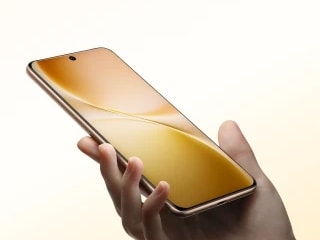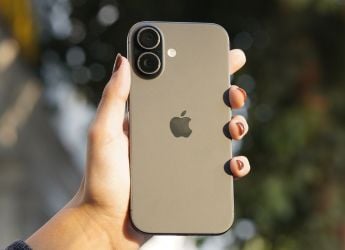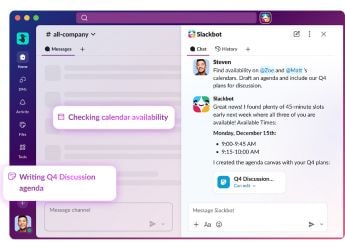- Home
- Mobiles
- Mobiles Features
- The 10 Best (and Worst) Tech Trends of 2018
The 10 Best (and Worst) Tech Trends of 2018

Covering the world of tech is like living through multiple simultaneous hurricanes. There's always some new product getting leaked or launched, some company trying to grab attention with its latest promotions, or some new catastrophe that threatens the safety of the world as we know it. We at Gadgets 360 publish dozens of stories every day and it can be a challenge to keep up with it all. Every so often, such as at the end of the year, we get to step back a bit and take stock of the bigger picture. Several distinct themes and trends emerge, and we see how all these stories come together as individual pieces of a much larger narrative.
Here are our perspectives on the best and worst things to come out of the consumer technology space in 2018. Which is which? We'll leave that to you, the reader, to decide.
1. Apple is getting beaten at its own game
It was inevitable that hordes of Android smartphone manufacturers would copy the iPhone X's notch, and sure enough, we saw our first example early in the year at the Mobile World Congress in Barcelona, with the unveiling of the Asus ZenFone 5Z (Launch, Review). In less than a year, every single manufacturer (with the sole exception of Samsung) has jumped aboard, bringing the notch to every rung of the price ladder.
More importantly, these same companies have already moved on. Chinese manufacturers have no problem with rapid refreshes and obsoletion, and they have not been content to wait for the next trend to copy. Thick, wide notches like we saw on the OnePlus 6 (Launch, Review) have given way to waterdrop camera bumps on many smartphones beginning with the Oppo F9 Pro (Launch, Review). In the past week or so, we've seen the first punch-hole cameras that promise to minimise even that little disruption, for example with the Samsung Galaxy A8s and Honor View 20.
The latest Android phones look fresh and futuristic, while the iPhone XS (Launch) recycles last year's body. Most of 2019 will pass before Apple releases a new model, and it will be interesting to see how that plays out.
![]() Oppo F9 Pro with its waterdrop camera notch
Oppo F9 Pro with its waterdrop camera notch
2. Phones are getting bigger and brighter
Remember when phones with screens bigger than 6 inches such as the Samsung Galaxy Mega (Launch) were called phablets? We used to think such devices were novelties, but now they're the norm. It's hard to find a phone that won't make your pockets bulge and your fingers stretch. The point of diminishing returns seems to be getting pushed further and further away. Big phones are good for entertainment, but we'd still rather have choices.
At the same time, greys and blacks seem to be going out of fashion. Today's buyers can choose phones that are bright red or purple, with gradients, speckles, or stripes on the back. Textures and patterns are in, and if you want your phone to make a statement, now's the time to buy. We're reminded of the early 2000s, when Nokia and other manufacturers were genuinely playful and imaginative with design. Also of note, we haven't seen Rose Gold in a while.
3. 4G is cheap and plentiful, if not very fast
There were no major smartphones launched in 2018 that do not work on 4G networks. It's pretty amazing in hindsight how quickly manufacturers and network operators made this transition, and it's a line on spec sheets that we just take for granted now.
The battles between Reliance Jio, Vodafone, Airtel and other operators have kept prices low, and while the volleys between them have become less frequent and intense, we're all still benefiting. Streaming media is now second nature for many people who previously had to check their data limits every few days, ourselves included.
We're still lagging in terms of speed, though. We've just been ranked 111th out of 123 countries in Ookla's 2018 Speedtest Global Index, which is quite pitiful. Hopefully we can make up for lost time, what with 5G on the horizon.
![]() (L-R): Asus ZenFone Max Pro M2, Xiaomi Redmi Note 6 Pro, Realme 2 Pro
(L-R): Asus ZenFone Max Pro M2, Xiaomi Redmi Note 6 Pro, Realme 2 Pro
4. Specifications matter more than ever
This year, a remarkable number of low-cost phones have launched with very powerful processors, most recently the Asus ZenFone Max Pro M2 (Launch, Review) with a Qualcomm Snapdragon 660. We've seen several formerly premium Qualcomm and MediaTek SoCs pop up in very affordable phones over the course of 2018, creating such a wide gap in the premium space that the company has had to create a new Snapdragon 700 series. Asus, Xiaomi, and Realme have been the major players in this arms race, and buyers couldn't be more delighted.
In the past, one high-end component would have meant severe compromises in other areas, but that isn't the case anymore. Most phones at the Rs. 10,000 level now have at least 3GB of RAM and 32GB of storage. 4-6GB of RAM and 64-128GB of storage are now expected in the Rs. 10,000 – 20,000 price bracket. 3000mAh is the minimum battery capacity, and buyers are increasingly aware of details as specific as a phone camera's aperture and sensor model.
Our readers regularly comment to confirm whether phones support quick charging, have Gorilla Glass protection, and will receive regular Android updates. Manufacturers are well aware that all these specifications matter to Indian buyers.
5. Freebies continue to flow
We were afraid that consolidation in online retail, import tariffs, and a general decline in the value of the Indian Rupee against the US dollar would put a damper on the discounts and deals we've grown to love, but that wasn't the case this year. Amazon, Flipkart and Paytm are still holding sale after sale, and the well of offers never seems to dry up. Sure, we didn't have many deals as spectacular as last year's MacBook Air for under Rs. 45,000, but there was still plenty to keep our credit cards warm.
Online retailers generally offer cashback schemes or partner with banks and other financial institutions, rather than simply slashing prices. The manufacturers of smartphones and other gadgets are also on board, timing their product launches and cutting prices to ride the waves these sale events create.
There are still great deals to be had elsewhere too. Not a day goes by when there isn't a superb offer on Uber Eats, Zomato Order, Foodpanda, or Swiggy. You can get discounted cab rides and all kinds of other services. These apps are fighting with each other to grab vendor exclusivity or special discounted packages. As long as the VC money flows, customers will win.
![]() AI-powered object detection and contextual search features on the Huawei Mate 20 Pro
AI-powered object detection and contextual search features on the Huawei Mate 20 Pro
6. It's still early days for AI
There aren't many buzzwords with more weight than “AI”, which has been promising to transform our lives for years now. Qualcomm and MediaTek are highlighting the AI capabilities of their latest processors, and phonemakers have latched onto scene and object recognition in their camera apps as the most tangible examples of AI in action. We're sure to see many more examples of deep learning as we go forward.
Deep learning and neural networks underpin many of the visible tech trends of 2018. Amazon's Alexa and the Google Assistant have been making waves, thanks to the launches of the Echo and Google Home speaker lineups this year. Both companies have been working on localisation, in terms of interaction as well as services. As AI grows, these devices and services will become more useful.
7. We're more numbed to security breaches than ever before
Facebook is now the poster child for breaches of privacy and trust. The year 2018 has seen multiple large-scale data leaks, with hundreds of millions of users affected. Do people take leaks seriously anymore? Are we all simply numb because of how frequent these problems are, or can we not comprehend their severity because of how large the numbers are?
Either way, it's clear that big businesses aren't doing enough to secure their systems and aren't taking privacy seriously enough. Campaigns such as Delete Facebook sound great, but people need useful alternatives because no one's giving up social media altogether anytime soon.
8. More people see the downsides of social media
On a related note, we've become all too familiar with the downsides of social media. From local scams and conspiracy theories to the still-unfolding saga of alleged interference in elections around the world, there has been increasing attention on the problem of how misinformation spreads.
Facebook began showing information about sites that people post links to in an effort to shed light on biased sources. WhatsApp recently took out a TV and radio ad campaign begging people to think before they forward messages and also imposed limits on forwarding this year.
![]() Real-time interactive features on Instagram Stories
Real-time interactive features on Instagram Stories
9. Sharing has become more private and video-driven
The combination of cheap and plentiful cellular data and a need to lock down our social media has led to a shift in how we share. 2018 has been the year of “stories”, or ephemeral video or text updates that disappear after a while. They're more personal, more spontaneous, and more suited to vertical smartphone screens.
Stories are now an inescapable part of many social media and messaging apps — Instagram, WhatsApp, Facebook Messenger, and even YouTube have introduced the format — and this year has been all about pivoting to it, for casual users, content creators, influencers, and advertisers.
Research firm Block Party says that over a billion accounts across social media services now post or watch stories. According to Facebook, stories will overtake the traditional feed of shared posts in 2019. The use of smartphone cameras means that there's massive interest in tools like live video filters and augmented reality stickers — each new feature or gimmick is a potential new user for a smartphone maker or app developer.
10. Multiplayer mobile gaming has really taken off
And still on the topics of social media and cellular data, 2018 will be remembered for the spectacular rise of social gaming, primarily in the form of PUBG and Fortnite. The “battle royale” format has become spectacularly successful. Colleges in India are posting notices warning students not to play them, and you can hardly step into a coffee shop or café these days without seeing groups of four friends huddled over their smartphones and barking directions at each other.
PUBG has 30 million active users each day, which is a staggering figure. Fortnite might not be as popular in India, but it has over 200 million registered users, a 5X increase from where it was at the beginning of the year. 75 million of them signed up between June and November this year. Other titles are trying to make the same formula work for them, and we might see a few new ones rise to the same heights of popularity in 2019.
Bonus: People are learning how and when to switch off
Do you find yourself checking for new WhatsApp group updates or Reddit posts every few minutes out of sheer habit? You might be spending too much time with your smartphone. In a move that might seem contrary to their interests, both Apple and Google this year introduced tools to help users visualise their device usage patterns and really take stock of how they're spending their time.
Apple's Screen Time and Google's Digital Wellbeing do pretty much the same thing, and they're meant to help people disconnect (as well as shield the companies from backlash). If statistics alone don't shock you with perspective you can make your phone enforce limits on apps and activities. Will any of this make us more mindful and less isolated? Perhaps time will tell.
![]() Samsung teased its upcoming foldable smartphone in November this year
Samsung teased its upcoming foldable smartphone in November this year
Our 2018 predictions: How did we fare?
At the beginning of 2018 we joined the dots based on leaks and our own research to make some predictions), and we have to say that we got pretty much everything correct. Apple did launch three smartphones and Chinese companies did continue to push prices down in the value segment. Several companies did give up the fight, but some have come back for another attempt.
Our hopes of phones with foldable screens were dashed, but they might be just around the corner with Microsoft, LG, Oppo and Samsung all seemingly in the race. The 18:9 aspect ratio did spread like wildfire, only to be overtaken by 19:9, which we did not see coming. We've seen some fine examples of curved glass, and Qualcomm's Snapdragon 845 was unchallenged at the top (except in the case of the custom SoCs that some companies use only for themselves).
5G demos did take place and networks are getting ready to light up in some parts of the world. Digital payments are now commonplace and being incentivised all the time. AR and VR don't have killer apps yet – we keep seeing demos, but nothing mainstream. Android Oreo did become mainstream, if not ubiquitous, and we're actually pleasantly surprised that Android Pie updates are rolling out at a decent pace right now.
Companies have been trying to promote their AI camera features, such as Huawei with its Mate 20 Pro (Review) but not all of them are successful, and it isn't clear yet that customers place much value on them. Wireless charging is more widespread but still niche, and while better wireless data standards exist, we haven't been able to really harness their full potential.
Android manufacturers certainly did go all-in on face recognition – some more successfully than others. Low-cost models such as the Asus ZenFone Max M2 (Review) offer this in-demand feature. We did see several models launching with in-glass fingerprint sensors, most notably the OnePlus 6T (Review) and we're sure to see more very soon. eSIMs are now showing up in phones including the Google Pixel 3 and Pixel 3 XL (Review) and some operators in India support them, but they won't fully displace physical SIMs for a very long time. And finally, there hasn't been any improvement in battery technology – only in software and hardware efficiency.
Are there any major trends that you think we've missed? Do you have any burning predictions for tech in 2019? Do let us know in the comments section.
Catch the latest from the Consumer Electronics Show on Gadgets 360, at our CES 2026 hub.
Related Stories
- Samsung Galaxy Unpacked 2025
- ChatGPT
- Redmi Note 14 Pro+
- iPhone 16
- Apple Vision Pro
- Oneplus 12
- OnePlus Nord CE 3 Lite 5G
- iPhone 13
- Xiaomi 14 Pro
- Oppo Find N3
- Tecno Spark Go (2023)
- Realme V30
- Best Phones Under 25000
- Samsung Galaxy S24 Series
- Cryptocurrency
- iQoo 12
- Samsung Galaxy S24 Ultra
- Giottus
- Samsung Galaxy Z Flip 5
- Apple 'Scary Fast'
- Housefull 5
- GoPro Hero 12 Black Review
- Invincible Season 2
- JioGlass
- HD Ready TV
- Laptop Under 50000
- Smartwatch Under 10000
- Latest Mobile Phones
- Compare Phones
- Samsung Galaxy A07 5G
- Vivo Y500i
- OnePlus Turbo 6V
- OnePlus Turbo 6
- Itel Zeno 20 Max
- OPPO Reno 15 Pro Mini 5G
- Poco M8 Pro 5G
- Motorola Signature
- Lenovo Yoga Slim 7x (2025)
- Lenovo Yoga Slim 7a
- Realme Pad 3
- OPPO Pad Air 5
- NoiseFit Pro 6R
- Xiaomi Watch 5
- Acerpure Nitro Z Series 100-inch QLED TV
- Samsung 43 Inch LED Ultra HD (4K) Smart TV (UA43UE81AFULXL)
- Asus ROG Ally
- Nintendo Switch Lite
- Haier 1.6 Ton 5 Star Inverter Split AC (HSU19G-MZAID5BN-INV)
- Haier 1.6 Ton 5 Star Inverter Split AC (HSU19G-MZAIM5BN-INV)

















